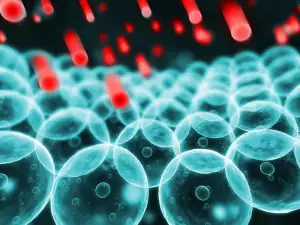Saponins are glycosides that have been sophisticatedly arranged. They are found in plants along with essential oils, fats, resins, and in rare cases along with alkaloids. Saponins do not contain sulfur and nitrogen in their molecules. It is not yet clear what their implications are for plants. Some believe that these substances are reserves that have a certain defensive role against herbivorous animals.
The title of this large group of compounds comes from the Latin "sapon" - soap. This is due to the fact that their aqueous solutions when shaken form a stable foam which does not disappear for a long time. Saponins are colorless substances with a good solubility in water.
Pure saponins are non-crystalline. Under the action of diluting acids, they are decomposed into a sugar moiety, and a special type of aglycone, called sapogenin. Saponins are poisonous to animals that have a fluctuating temperature of the blood (fish, snakes, reptiles). However, saponins are beneficial to human health, so they come appear in the ingredients of numerous supplements.
Types of saponins

Depending on the chemical structure of the sapogenins, there are two main groups of saponins:
Steroidal saponins - when it comes to chemical structure, they are similar to sex hormones, sterols and cardiac glycosides. They are an important feedstock for the production of steroid hormones and derivatives of cortisone. Steroid saponins are found primarily in the Solanaceae, Fabaceae, Liliaceae families and others. They play an important role in the synthesis of steroid hormones and derivatives of cortisone.
Triterpene saponins – the sapogenins in these glycosides are triterpenes. The most important ones are contained in horse-chestnut, soapwort, liquorice, primrose, ginseng and ivy.
The strongest cytostatic of plant origin continues to be the triterpene saponin, isolated from cyclamate, but is not used because of its severe toxicity. Triterpene saponins are applied in practice mainly in the composition of expectorants.
Sources of saponins

As seen, saponins are contained mainly in plants. One of the most popular plants, that is a source of steroidal saponins is the herb tribulus. Even as far back as 1970, the plant was used in supplements that stimulated metabolism.
Other sources of crucial saponins are soapwort, primrose, ivy, horse-chestnut. Overall, the majority of medical plants contain various saponins.
Benefits of saponins
Saponins have diverse pharmacological and medical applications. They exhibit a haemolytic activity. Saponins facilitate the absorption of fat, carbohydrates, and other substances in the body. Some of them tend to raise blood pressure and affect metabolism, but also strengthen the body.

Therefore, these are very frequently used in medical practice. In medicine, they are also used for their excellent expectorant action, but their anti-tumor, anti-inflammatory and pro-reproductive system effects should not be underestimated.
They are also used in medications for the treatment of atherosclerosis. Diosgenin is key because it produces a number of well-known steroid supplements - corticosteroids, hormones and more.
Some steroidal saponins have excellent antifungal and antibacterial activities. Triterpene saponins, in turn, have a curious property of facilitating the absorption of substances in the digestive system.
Many plants worldwide synthesize saponins, and it is believed that their natural function is to protect them from natural pathogens. Due to the large chemical diversity of steroid and triterpene saponins, in recent years, there is renewed interest and research on these substances, especially as potential chemotherapeutic agents.
According to studies from 2005, saponins possess immunoregulatory and anti-cancer capabilities, they affect the permeability of cell membranes.















Comments